WWII German Police Dress Bayonet -
The German police formed a very important arm of Hitler's hold to power. While the organization
was technically civilian, the activities, uniforms and equipment employed reflected more as a
paramilitary group.
Officers were allowed to wear a dress bayonet as part of their uniform. These items were worn
promarily at special social events such as parties, parades, weddings, etc. The parade bayonets
were beautifully design and were meant to compliment the looks of the uniform rather than be
a weapon for fighting.
A lesser quality police bayonet was also available.
The police dress bayonet is featured in this page.
|
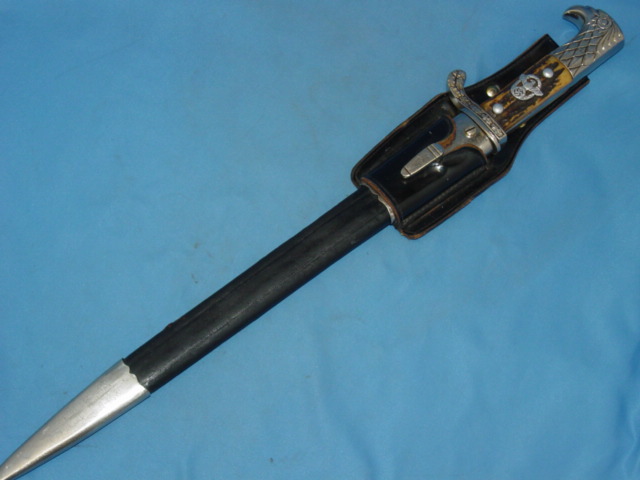
THE DESIGN OF THE BAYONET
The design of the dress bayonet consists of an elegant set of stag handles with one side bearing
the metal police insignia. The pommel is an extension of the handle's frame. It ends in the
shape of an eagle head facing to the left. The eye of the eagle's head is formed by the lugnut
release button. The crossguard has a single rounded extension that
points upwardly. The other side has a round indentation which normally holds the barrel of the
rifle, even though this bayonet
could not really be mounted to one.
The scabbard is made of black leather. It has two silver colored metal fittings. One at the
throat and one at the tip. The throat fitting is secured via the us of a screw. The tip
fitting is secured by a staple in the back section. A brown leather frog is present. The purpose
of this piece is to allow the bayonet to be worn by the officer. The frog is sewn together
with heavy duty white cotton thread, Two rivets are also added and placed strategically at the
points of stress.
The blade is fully chromed. It is of single edge construction with a heavt spine. Tapering
at the tip and becoming double edge in that section. The length of the blade is longer than the
standard bayonet employed by the German armed forces.
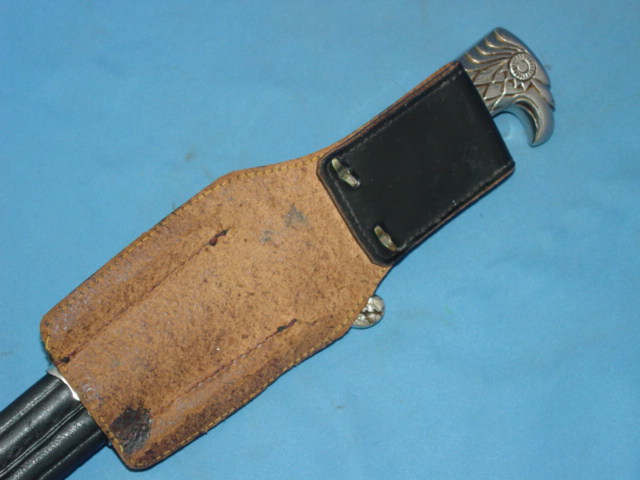
THE BLADE OF THE BAYONET
The blade of the bayonet is stamped at the base with the manufacturer's
logo which consists of the figure of the
head of a knight facing to the left. The initials WKC are placed just below. This was a well
known maker of quality edge weapons of the Third Reich.
The other side of the blade is marked
with the words: Weyersberg, Kirschbaun & Co (WKC fully speeled out) followed by the name
of the town "Solingen".
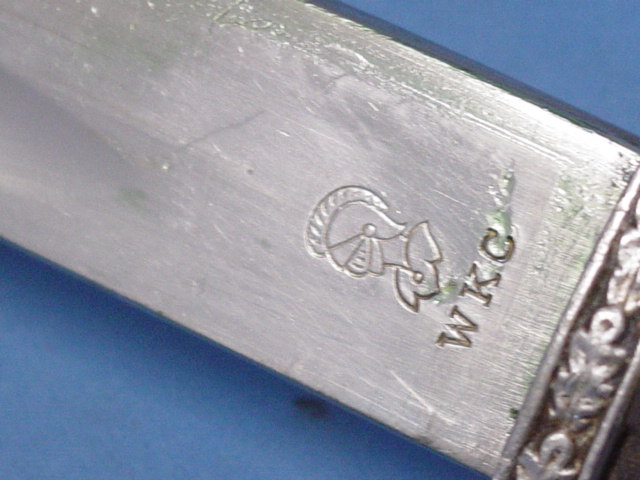
|
This page is a recognition and identification guide for German bayonets. Multiple
detailed photos of a specific sample are provided. Descriptions point out specific
points that should be noted.
One of the most commonly asked questions is "How much is my German bayonet worth?".
A price guide is included here to address this question. The value of the Nazi bayonets is
reviewed over a period of several years. A trend can be observed. The present worth
of the police sword in the collector's market is illustrated.
This service is provided free of charge to the visitor/enthusiast courtesy of
MilitaryItems.com,
a company dedicated
to the preservation of military history and to providing quality military antiques and
collectibles to museums, institutions and the general public.
|
|
|
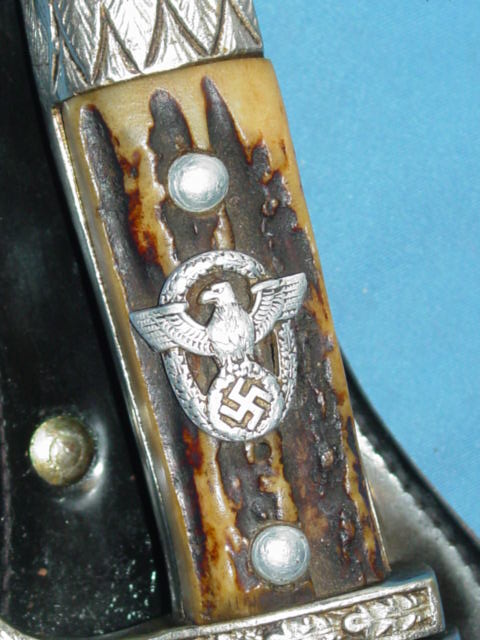
The quality control at the factory was very stringent. A production number was stamped on the
blade and the scabbard. The numbers were the same. This concept is known in the collector's
wprls as matching numbers.
Over the course of the years it was not uncommon to have bayonets and scabbards be interchanged,
therefore loosing the characteristic of having the same number. This is one reason why it is
harder to find matching number bayonets.
The photograph that follows shows an example of how the bayonets were marked. In this case a
three digit number was employed (106). The location of where the number was placed may vary
from manufacturer to manufacturer and depending on the year.
|
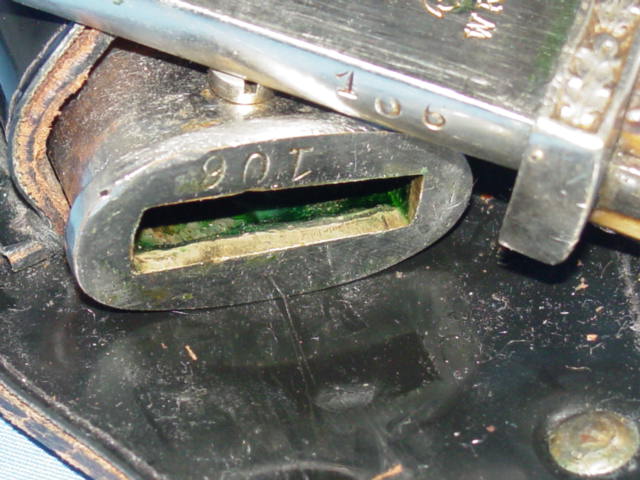 |
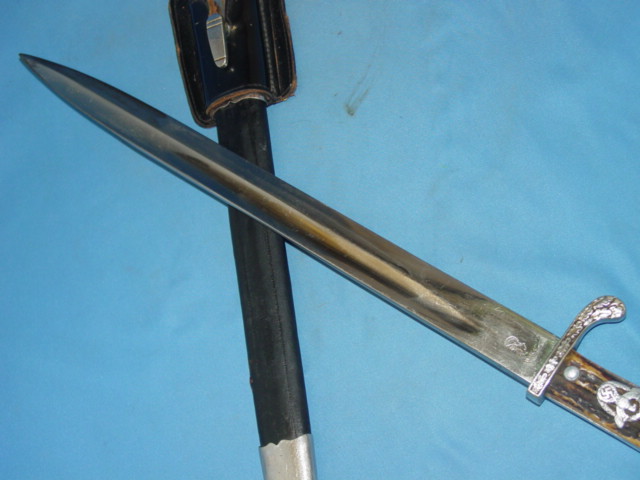 |
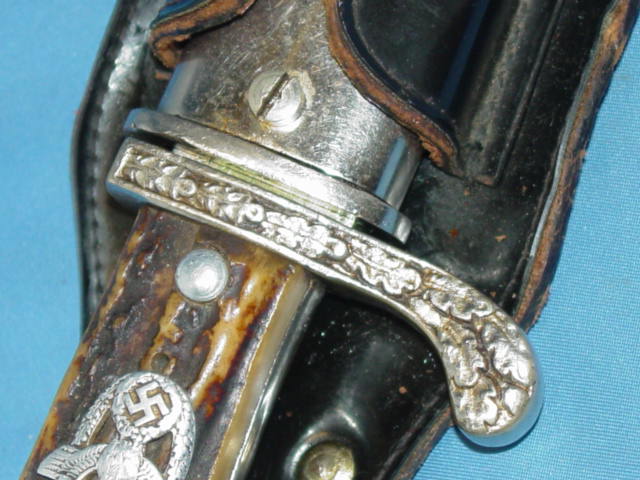 |
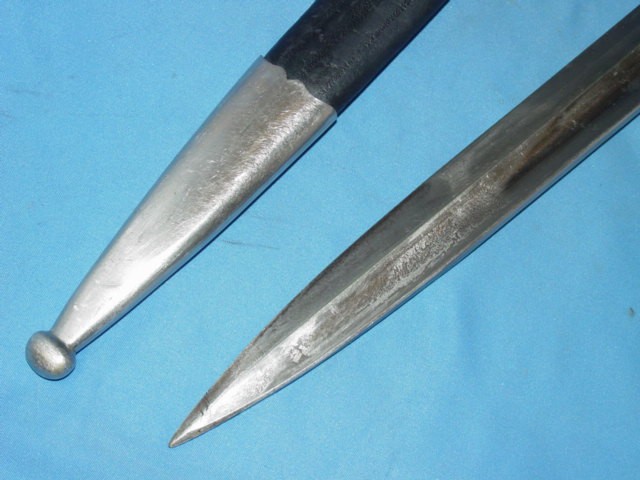
A closer look at the pommel shows the eagle head styling. All metal construction in silver
color. A section protrudes out to simulate the beak. The lugnut release button simulates
the birds's eye. Layering to the left and right of the eye define the head area in an
artistic fashion. Plumeage is placed just below the eye. Very nice detailing to each feather.
It ends at the top of the stag handle.
The pommel ads a very appealing touch to the overall design of the police bayonet. This is
one of the most intricate designs among the nazi pommels.
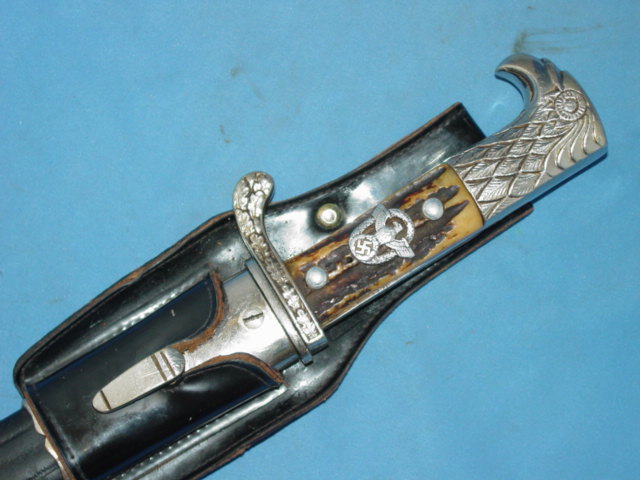
|
|
This edge weapon is currently being
reproduced. It is becoming more difficult to be
able to tell the fake ones from the real ones because the quality of the reproductions is improving. The
collector must become familiarized with the construction style and materials employed in the manufacturing
of edge weapons. Attention to the details is critical in order to be able to determine the authenticity
of the item.
If you have an interest is seeing other edge weapons of the Third Reich, you can do so by going to our
WWII German Edge Weapons identification guide. Where
we cover blades from the Heer (Army), Navy (Kriegsmarine), Air Force (Luftwaffe) and other organizations.
|





